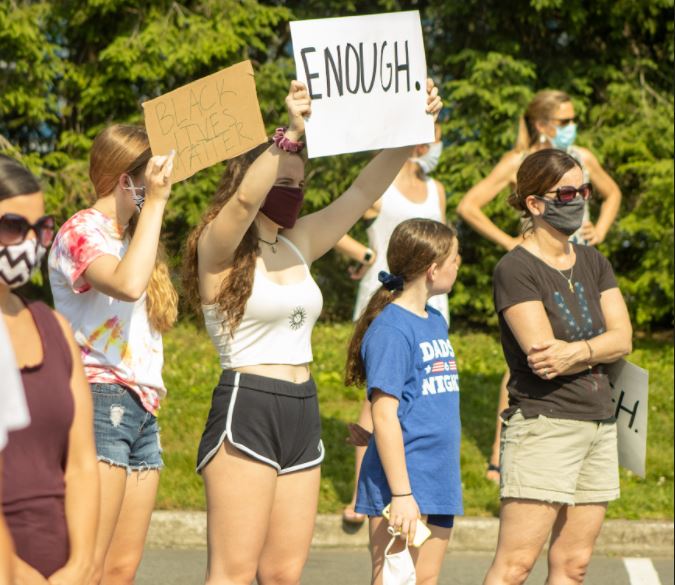The racial divides embedded in our democracy are arguably best represented by our town, yet they have been ignored in Ridgewood for a long time. The truth, whether people want to talk about it or not, is that Ridgewood has serious problems when it comes to racism. The unfortunate part is that too many of us don’t have the incentive to amend them.
I believe that people did care, at least in the beginning. After George Floyd’s murder, Ridgewood residents were jolted awake to the realities of racism. Empathy toward the victims of police brutality is something almost every rational person in Ridgewood feels. They know it’s going on, but evidently, most of us aren’t ever directly impacted. We continue to safely watch BIPOC die from the comfort of our million-dollar living rooms, never witnessing the corrupt systems of law enforcement first hand.
SJ, a student at Ridgewood High School, says that “I think that as the movement was gaining more attention and even with protests happening in Ridgewood, it opened a lot of people’s eyes. The protests made them realize that the stories regarding racism and discrimination aren’t small instances that they hear about in the news, but they are the experiences of real people.”
SJ also commented on the prevalence of white guilt during this movement. “When they make this realization, they may feel guilty for being so naive and not realizing their privilege. They now feel the need to stand up and say something. Especially in a white, upper middle class town like Ridgewood, the majority don’t realize their privilege.”
All over town, the realization that SJ described caused people to support the movement. The question is, how have they taken action, and what effect do certain actions really have on mending the racial disparities in Ridgewood and beyond?
Performative activism, as described by Wikipedia, is “activism done to increase one’s social capital rather than because of one’s devotion to a cause.” Sound familiar?
Lily Zachariah, a sophomore who has been active in the BLM movement, notices performative activism in our town. “I do believe there is performative activism in Ridgewood, however not a significant amount,” she explains. “For the kids that were performative activists, I believe it stemmed from this understanding that these issues are important but not caring enough to actually take them on, so they just post a black square [on Instagram] and maybe one pro BLM post on their story and think that is enough.” Lily concludes that “people still advocating now in November are generally people who feel passionate about racial justice.”
Contrastingly, SJ says that “I do believe performative activism is very high in Ridgewood. I’ve witnessed the same people who have made racist jokes, talk with a blaccent, and even say the n-word post things about the BLM movement. They suddenly act like they care about it despite their previously destructive behavior.”
She goes on to confirm the speculation that “They treat it like a trend and that’s where it stems from. Trends are easy to follow. You see something about it on social media and you begin to follow it.”
This makes a lot of sense, as we have seen social media bandwagons that people are quick to hop on. Think about modern fashion defined by social media trends, memes, Tik Tok–these are trends that people participate in on a large scale, arguably for the purpose of fitting in. The whole concept of social media is superficial expression and the struggle to fit in, at least to the common consumer. Why would this be any different?
Julia, a sophomore at RHS agrees, saying that “I believe that at the start, people worked to educate themselves on this issue and began to acknowledge the issues rooted in this town. However, the attention has since then shifted which makes me think that it was perceived as a ‘trend’ rather than a real push toward social justice.”
The BLM movement in Ridgewood has followed a wave, first becoming prevalent in June and slowly dying down toward the beginning of fall. This is a pattern commonly seen in other, more obvious trends, whether it be clothing, music, or pop culture.
Is that what this is to us? Pop culture? I think that’s for us to decide. The fight for racial justice isn’t over yet. Keep sharing resources, having difficult conversations, educating, and amplifying the voices of the BIPOC community.
Michelle Hashem
Staff writer
Graphic: Sam Cohen

